
This very special film features a carefully curated selection of some of the priceless messages that have graced Anthology’s voicemail system over the years. From the historically important to the utterly (and sublimely) absurd, they feature a cast of characters ranging from legendary avant-garde filmmakers, scholars, and other cultural figures to civilians whose legend has (until now) been confined to the offices of Anthology, thanks precisely to their witty, eloquent, eccentric – or in some cases unforgettably psychotic – voicemails. We’ve toyed with the idea of sharing these messages in some form for years, and the “Imageless Films” series provides a perfect pretext.

For over 70 years, Jonas Mekas, internationally known as the "godfather" of avant-garde cinema, documented his life in what came to be known as his diary films. From his arrival in New York City as a displaced person in 1949 to his death in 2019, he chronicled the trauma and loss of exile while pioneering institutions to support the growth of independent film in the United States. Fragments of Paradise is an intimate look at his life and work constructed from thousands of hours of his own video and film diaries-including never-before-seen tapes and unpublished audio recordings. It is a story about finding beauty amidst profound loss, and a man who tried to make sense of it all... with a camera.

Director
Keaton's One Week (1920) digitally embossed

Director

Director
“All hallucinations of Paradise Lost come from the longing to levitate. Vision is lightship and shipwreck - Herbert Postl from Ideal Forms of Vanishing

Director
Premiere at the Museum of Modern Art in New York City on August 5, 2021.

Director
40 minute 3D work.

Editor
Part of his “Nervous System” performances, the artist’s skills as a projectionist were highlighted when he invented this specially designed system of two analytic stop-motion projectors, equipped with a spinning exterior shutter, enabling him to compare stills of found footage side by side. While he wanted to be as frank about sexuality as possible, Jacobs was mostly uninterested in the pornographic content of the film, favoring the discussion it prompted about the depth of the formal elements of movement.

Director
Part of his “Nervous System” performances, the artist’s skills as a projectionist were highlighted when he invented this specially designed system of two analytic stop-motion projectors, equipped with a spinning exterior shutter, enabling him to compare stills of found footage side by side. While he wanted to be as frank about sexuality as possible, Jacobs was mostly uninterested in the pornographic content of the film, favoring the discussion it prompted about the depth of the formal elements of movement.

Director
"Influenced by avant-garde artist-refugees from Europe, non-representational art dominated the art market after WW2 [...] Viewers offered open minds, picking up on pointed suggestion and discovering the heady adventure of engagement with ambiguity. MOVIE THAT INVITES PAUSING is just such a work in the realm of cinema. It offers no particular path to follow and running time is tentative; for repeat viewings it has none." - Ken Jacobs

Director
An Eternalism film.

Director
An Eternalism film.

Director
An Eternalism film.

Director
An Eternalism film.
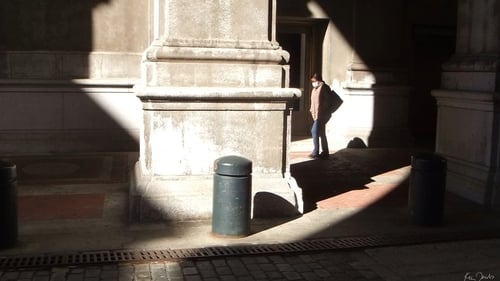
Director
An Eternalism film.

Director
An Eternalism film.

Director
An Eternalism film.
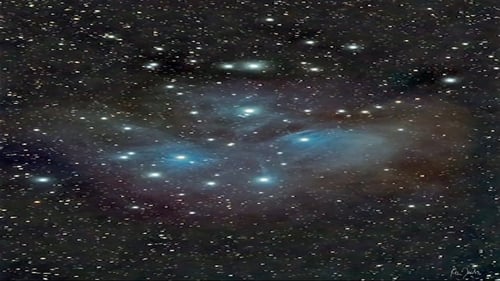
Director
An Eternalism film.

Director
An Eternalism film.

Director
An Eternalism film.
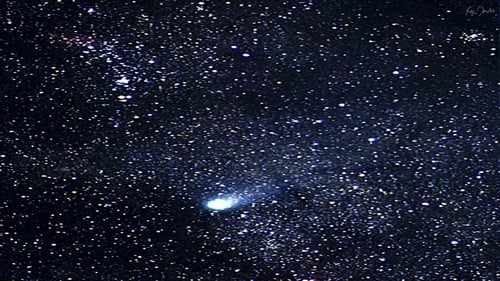
Director
An Eternalism film.

Director
An Eternalism film.

Director
An Eternalism film.

Director
An Eternalism film.

Director
An Eternalism film.

Director
An Eternalism film.

Director
An Eternalism film.

Director
An Eternalism film.

Director
An Eternalism film.

Director
An Eternalism film.

Director
An Eternalism film.

Director
An Eternalism film.
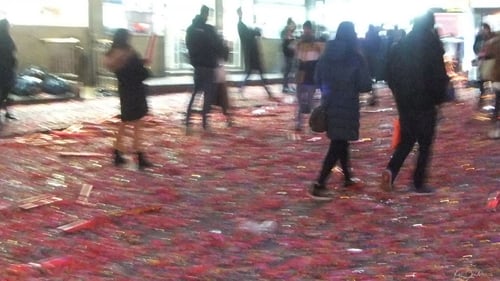
Director
An Eternalism film.

Director
An Eternalism film.
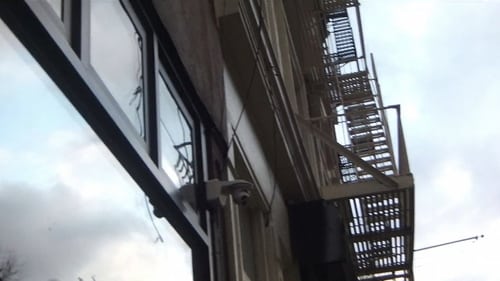
Director
An Eternalism film.

Director
An Eternalism film.

Director
An Eternalism film.
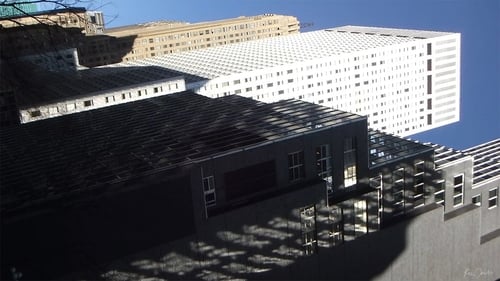
Director
An Eternalism film.

Director
An Eternalism film.

Director
An Eternalism film.

Director
An Eternalism film.
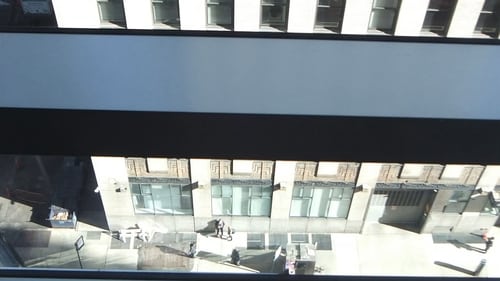
Director
An Eternalism film.
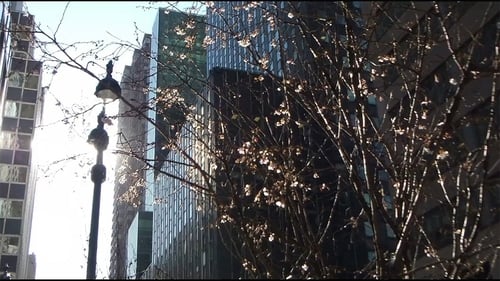
Director
An Eternalism film.

Director
An Eternalism film.

Director
An Eternalism film.

Director
An Eternalism film.

Director
An Eternalism film.

Director
An Eternalism film.

Director
An Eternalism film.
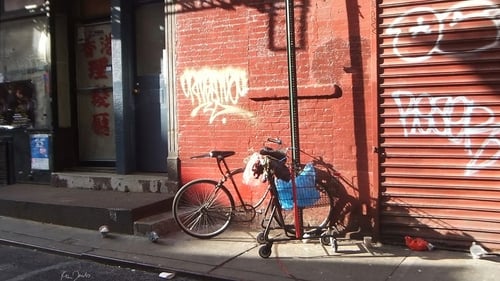
Director
An Eternalism film.

Director
An Eternalism film.

Director
An Eternalism film.

Director
An Eternalism film.

Director
First two-cycle Eternalism. Interesting for the contrast of movements and depth configurations but also in indicating an end to the display and releasing the viewer, but with the option of repeating.

Director
An Eternalism film.

Director
An Eternalism film.

Director
An Eternalism film.

Director
An Eternalism film.
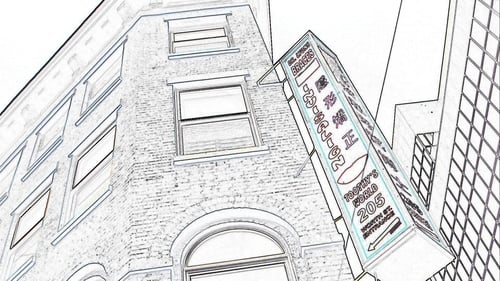
Director
An Eternalism film.

Director
An Eternalism film.
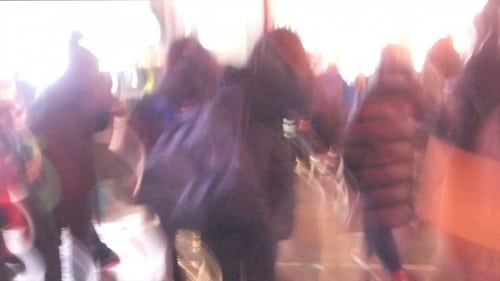
Director
An Eternalism film.

Director
An Eternalism film.

Director
An eternalism film by Ken Jacobs.

Director
"My last image of Jonas."—Ken Jacobs
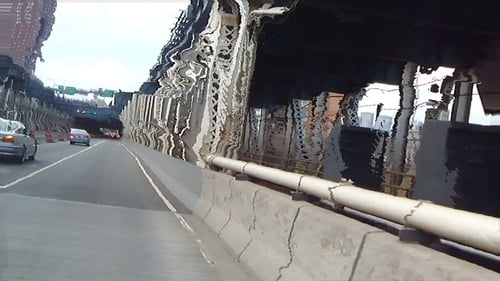
Director
An Eternalism film.

Director
Jacobs’s hypnotic “3-D” adaptation of New York 1911, a long-forgotten Swedish documentary restored by MoMA in 2017, is representative of his current work.

Director
Ken Jacobs' black and white abstract short from 2019, in five parts.

Director
Черное и белое вызывает ностальгию по Великой депрессии. Все было так дешево, в том числе жизни. Мы видим, как смельчаки (отчаявшиеся люди) борются за денежные призы. Ребенок готовится ко второй мировой войне.

Director
The Nervous Magic Lantern is a projection device I came up with in the year 2000. With assistance from wife Flo (Florence) we have been performing with it ever since. It pushed aside The Nervous System first presented publicly in 1975. The Nervous System required two prints of a film shown slightly out of sync, advancing very slowly but in rapid alternation. Projections were at first more like activated slide-shows than movies, with things appearing both in motion and - to an extent - in depth.

Director
Mountain ranges lighter than air.

Director
Fall into winter 1964, Urban Renewal forced us to move a few blocks to West of Broadway. Our Sky Socialist ‘set’ is still standing and I’m drawn back to document more. It’s old New York, a lot of history. And then it no longer stands, no more than my first home in the slums of Williamsburg just across the river.

Director
Ken and Flo Jacobs walk from an MTA bus to their apartment in the icy rain. This is transformed by a 360° camera and digital effects into an unforgettable trek on the actual planet.

Director
Ken Jacobs applies his patented Eternalism process to 3D images he took of Jackson Pollock's 1954 splatter painting.

Director
"Details of paintings by Joan Mitchell undergo Eternalizing. The process introduces emphatic flicker that helps create illusions of depth, even for a single eye. But flicker is not for everyone and should be avoided by those with unusual brain conditions. Abstract-Expressionism was a way out of thinking of WWII and Mitchell was among the best of its practitioners. Paint is what happens in her work, inspired by nature but transfigured and with no obvious reference to objects. Her great range of paint applications, however, do invite the imagining of them in depth. Imagined in depth, yes but not the all-too-convincing illusion show here." - Ken Jacobs

Director
3D Eternalism film by Ken Jacobs

Director
3D Eternalism by Ken Jacobs

Director
Description by Ken Jacobs: Along the Elevated is an expanse of city architecture in delicious depth (depth is not only what things exist in, its ins and outs speak to us). We follow a speedy lunch wagon (fast food) until it turns in another direction. With such near-nothing incidents do I keep my mind off this wicked presidency.

Director
Description by Ken Jacobs: A Spin Through Night City gets many visual elements spinning. Only daughter Nisi working at our computer knows how difficult it is to get both foreground—rain on the cab window—and background -the city streets—in focus at the same time. The picture we see is deep but the pictorial source remains a single plane.

Director
Description by Ken Jacobs: Get Up and Go is a glimpse given dimension. No day is complete without a visit to Chinatown and on this day my movie camera caught a woman rising from a bench. That’s all (the obvious influence is James Joyce's Ulysses). Malcolm Goldstein’s violin takes us to the edge.

Director
Description by Ken Jacobs: Shelley Duvall is Olive Oyl is the fourth in a series of shorts (Popeye Sees 3D; Pappy Sees 3D, Too; Sweepea’s Favorite Eternalisms. We’re crazy about both the original Popeye and the Robert Altman film but the point in evoking the one-eyed sailor was to bring attention to single-eye depth perception. The Eternalism is my name for moving screen-images that not only appear in depth on 2D monitors but can continue in place with no start and no repeat point forever, defying time as we know it but also with their impossible depths available to even a single eye. Time’n’space time’n’space, transformed by cinema! The unthinkable available as the new electronic greeting card.

Director
A picturing of sound in 3D.

Director
World Premiere -- Museum of Moving Image 1/14/2017

Director
Obvious as the facts may be, (and available on the web; tap in the expression Reichstag 9/11), we are all wonderfully free to “make up our own minds”. The title aligns the Neo-con anticipated “new Pearl Harbor” with the infamous Reichstag fire the Nazis exploited to solidify their power. The images of REICHSTAG 9/11 are derived from eyewitness recordings on the web. Deception upon deception, this time optical. (Ken Jacobs)

Director
3D Eternalism film by Ken Jacobs

Director
3D Eternalism film by Ken Jacobs

A “Cinéma, de notre temps” series episode directed by french filmmaker Jackie Raynal, originally aired 29 May 2016.

Director
"Abstract Expressionist Cinema"

Director
"Abstract Expressionist Cinema"

Director
"Abstract Expressionist Cinema"

Director
"Abstract Expressionist Cinema"

Director
"Abstract Expressionist Cinema"

Director
"Abstract Expressionist Cinema"

Director
"Abstract Expressionist Cinema"

Director
A study in lunging waves, in 3D.

Director
Features two old men talking on the Lower East Side; one loud mouth, the other bizarrely amiable, in 3D.

Director
Film by Ken Jacobs. Exists as both 2D and 3D Version

Director
A 3D film by Ken Jacobs

Director
Experimental short film directed by Ken Jacobs with music by diNMachine.

Director
"Hidden in a movie shot is an infinity of monsters. Pause and they show themselves (at their worst in 3D)." - Ken Jacobs

Director
The diamond patterns in the wire fencing for construction on his street inspired Ken Jacobs’s latest astonishing 3-D extravaganza.

Director
Ken Jacobs’ most recent stroboscopic work transforms a typical New York street scaffolding scene into a mesmeric, Christo-esque merry-go-round.

Director
Found footage film by Ken Jacobs of Pygmalion starring Leslie Howard with various digital glitches.

Director
3D Eternalism film by Ken Jacobs

Director
A reworking of 10 seconds from Entrée d`une noce à l`église (Entrance of a wedding at the church), the 1896 Lumiere brothers film. As the line of wedding guests advance slowly, the adjacent frames, one to each eye, join to create an irrational and impossible 3-D. Silent film, avant-garde, and digital 3D: 120 years of film history merging into one single cinematic event.

Director
Studying painting with Hans Hofmann had sensitized me to depth phenomena, to strange readings of depth including the most unnatural: flat. In 1964, I learned of the Pulfrich Effect and gained access to wholly illusionistic depth way beyond indication. This led in 1975 to my partner Flo and I beginning to explore the Nervous System, performing with two stop-motion film projectors to superimpose sequential film frames showing different perspectives for extended periods of time. A spinning shutter between projectors activated the compound image onscreen, introducing depths available even to a single eye but strange, uncanny; nuts. In 2000 we switched to digital processes, we patented our discoveries for the new medium and exploration continued, continues. Eternalisms show stereo photographs, their two close perspectives joined via computer to display as a single ongoing dimensional image that can be seen without glasses. Not to be trusted for a moment but interesting.

Writer
Abstract short in Jacob's current 3D style.

Director
Abstract short in Jacob's current 3D style.
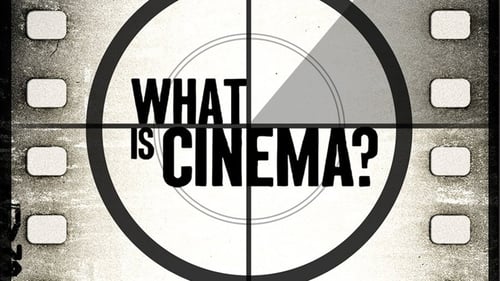
Self
Using the words and ideas of great filmmakers, from archival interviews with Alfred Hitchcock and Robert Bresson to new interviews with Mike Leigh, David Lynch, and Jonas Mekas, Oscar-winning filmmaker Chuck Workman shows what these filmmakers and others do that can't be expressed in words - but only in cinema.

Director
"Joys…began on the corner of Broadway and Spring but it was the next night waiting on Bleecker that it was understood a movie of sorts was underway, depicting a general waiting for the bus rather than one specific evening. Since acquiring a small 3-D camera I dawdle everywhere but prolonged bus-waits allow for a continuity of images, thus a movie. Computer-editing with Nisi Jacobs allowed further investigation, this time into digital 3-D itself.” - Ken Jacobs

Director
"3D is rather a slighting way to speak of deep space. I enjoyed AVATAR and HUGO, though not much else among the movies I’ve seen in illusionary depth. They place things in depth but don’t go at depth as a realm to be investigated, toyed with; no mindbenders other than story. Cezanne, Cubism, never happened. This movie begins to play with possibility, with things only sometimes appearing real." - Ken Jacobs

Director
"Waiting, waiting, for a bus to carry us a mile downtown. We often give up and walk. When we commit ourselves to waiting the bus usually appears with a second bus, empty, trailing by a block. We assume the drivers feel free to stop and gab between rounds; not nice, but then the job is impossible and it’s understandable they need a break, some social activity. There’s a couple of stops we wait at a lot, after visiting with friend Max or returning at night from Anthology Film Archives. Worse for Flo than for me; I photograph. I dawdle in the streets in any case, photographing a compulsion since getting a 3D camera. And night is a great time for time-exposures, for distortions in 3D." - Ken Jacobs

Technical Supervisor
"2013. USA. Directed by Ken Jacobs. With technical assistance by Nisi Jacobs. Part two of four. “Joys…began on the corner of Broadway and Spring but it was the next night waiting on Bleecker that it was understood a movie of sorts was underway, depicting a general waiting for the bus rather than one specific evening. Since acquiring a small 3-D camera I dawdle everywhere but prolonged bus-waits allow for a continuity of images, thus a movie. Computer-editing with Nisi Jacobs allowed further investigation, this time into digital 3-D itself.” In 3-D. 40 min." – The Museum of Modern Art

Director
"2013. USA. Directed by Ken Jacobs. With technical assistance by Nisi Jacobs. Part two of four. “Joys…began on the corner of Broadway and Spring but it was the next night waiting on Bleecker that it was understood a movie of sorts was underway, depicting a general waiting for the bus rather than one specific evening. Since acquiring a small 3-D camera I dawdle everywhere but prolonged bus-waits allow for a continuity of images, thus a movie. Computer-editing with Nisi Jacobs allowed further investigation, this time into digital 3-D itself.” In 3-D. 40 min." – The Museum of Modern Art

Director
Each new year Flo and I join the young and many-languaged crowd walking to the top of Brooklyn Bridge ostensibly for the fireworks. Fact is the crowd, the bridge, comprise the spectacle. The Bridge is particularly dear to us since the 'Sixties, when we learned the story of the Roeblings, father and son and daughter-in-law. The Bridge embodies their wishes for America, their blessing, nothing less. I filmed (on 8mm.) The Sky Socialist back then and this is a follow-up.

Himself
Henry Hills’s Emma’s Dilemma reinvents the portrait for the age of digital reproduction. In a set of tour-de-force probes into the images and essences of such downtown luminaries as Richard Foreman, Ken Jacobs, and Carolee Schneemann, Hills’s cinematic inventions literally turn the screen upside down and inside out. In this epic journey into the picaresque, we follow Emma Bee Bernstein, our intrepid protagonist, from her pre-teen innocence to her late teen-attitude, as she learns about the downtown art scene firsthand. In the process, Hills reimagines the art of video in a style that achieves the density, complexity, and visual richness of his greatest films.

Director
Blankets for Indians blends a stereoscopic study of water spurting from New York’s City Hall fountain with an intimately detailed portrait of an Occupy Wall Street march. While in the process of shooting the fountain in 2012, Jacobs serendipitously turned his camera toward a large protest marching to Zuccotti Park in support of Occupy Wall Street. The unexpected connection gives the film new life, seamlessly moving between sensual observation and political commentary, reflection, and abstraction. Using freeze-frames, text, and 3D manipulation, Jacobs questions the contemporary conditions of socio-political struggle, its relation to aesthetics, and the labor necessary to produce both.

Director
Jacobs documents a New York street vendor, taking a short interaction between the vendor and a customer and protracting it into a strobing, throbbing, pulsing meditation on movement and light.

Director
A young woman stands by a car while scenes from metropolitan life flash by.
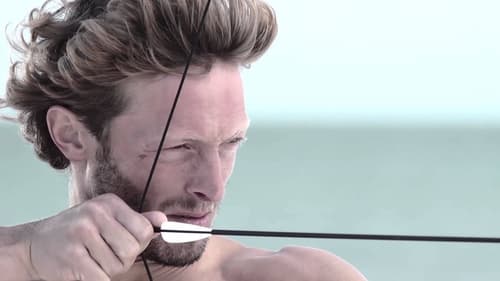
Director
Альманах, состоящий из шестидесяти кино-открыток длиной в одну минуту, которые сняли 60 режиссеров из разных стран мира. Проект разработан как ода 35-миллиметровой пленке и посвящен сохранению свободы мысли в кино.

Director
Suggestion: Please see 'Another Occupation' before 'Seeking the Monkey King'. Contains flicker like many of my works; avoid if you have epilepsy or other unusual brain conditions.

Himself
Experimental filmmaker Pip Chodorov traces the course of experimental film in America, taking the very personal point of view of someone who grew up as part of the experimental film community.

Writer
Early 20th-century street vendors push their carts loaded with vegetables. It is time for them to go. Little by little, the viewer discovers fragments of the film of that reduced space in which multiple actions are occurring. The films' technique, The Nervous System, succeeds once more in creating the illusion of visual depth.

Director
Early 20th-century street vendors push their carts loaded with vegetables. It is time for them to go. Little by little, the viewer discovers fragments of the film of that reduced space in which multiple actions are occurring. The films' technique, The Nervous System, succeeds once more in creating the illusion of visual depth.

Director
A sly take on recent US foreign policy in the Middle East, 3D footage of the exit from NYFF’s premiere of The Social Network makes for characteristically angry and awestruck Jacobs’s fare.

Director
Still shots of a revolving door at New York City's Church Street Station Post Office are edited together to create a sense of movement, redoubled by the piece's three-dimensionality when viewed with the proper glasses, as the opening titles suggest. Revolving Door is one of a group of works that continue concerns found throughout Jacobs' oeuvre. The rotating landscapes of earlier works and performances, in which the projector is used as a tool to create dimensionality and movement within and between still frames, here give way to a playful comment on stillness, movement, and depth.

Director
An experiment in 3D abetted by a Pulfrich filter, originally theorized in the 1920s. Features water cinematography by Phil Solomon.

Himself
A series of video letters between José Luis Guerín and Jonas Mekas.

Director
The Roses is a meditation on art, aging, and the nature of listening, as well a conversation between generations and between artists. The anaglyph 3-D video is based on a section in Henry Hills' Emma's Dilemma (1997-2012). Jacobs' The Roses takes "Nervous Ken," the chapter of Hills' film in which Emma interviews Jacobs about his work, finances, and artistic goals, as a point of departure or invitation to conversation, staging an "imitation" of the scene in his studio.

Director
A stereograph of an ocean wave breaking is suspended in time as it reshapes in time and in depth. 3-D for both two eyed and single-eyed viewers.

Editor
Jacobs applies his exacting digital techniques to footage of his New York City working and living space.

Writer
A stroboscopic train ride along a jungle stream. Asian military men appear with their pith-helmets, keeping the ferns, trees, monkeys, natives in line. The master of the stroboscopic depth illusion changes.

Director
A stroboscopic train ride along a jungle stream. Asian military men appear with their pith-helmets, keeping the ferns, trees, monkeys, natives in line. The master of the stroboscopic depth illusion changes.

Director
Jacobs applies his exacting digital techniques to footage of his New York City working and living space.

Director
DAY AND NIGHT was photographed with a still-camera with close-up attachment. Two close images were taken, with the subject -a heather plant- on a turning platform. The heather blossoms are tiny, on average less than 1/8 inch in size. Color was augmented and transformed via computer. Movement was computer-created by way of an editing-formula of my invention (patented) by which 3D films can be made from 2D imagery exploiting similarities and differences between two adjacent film-frames. Active 3D events appear that impossibly continue in one direction without change, my name for them is both silly and fitting: eternalisms.

Himself
The documentary’s starting point is the discovery and restoration of a rare and unknown photography reel reproduced from a mutoscope film, made in 1901 in London, about Santos Dumont (1873 – 1932). The work approaches historic and artistic aspects from the beginning of Cinema (pre cinema, variety film) and a cinema that appropriates archive material (found footage, recycled films), through interviews, documents, visual metaphors and the articulation of a poetic essay.

Director
“‘FAIR AND WHITE’ is the name of a line of beauty parlors in Paris largely catering to an African-French clientele. No-one apparently goes berserk seeing the signs. We were visiting Pip Chodorov in the Latin Quarter and found ourselves walking through a concentration of such establishments. I had my 3-D outfit, two small Vado video-cameras mounted side-by-side for the capture of stereo images. There is a law in France against photographing people without their expressed agreement, a decent law, right? And I broke it and I’ll break any such law that forbids memory, corpuscular or mechanical.” -Jacobs

Director
3D film by Ken Jacobs

Director
Sequel to Sensoriums at Sea: Dr. Toothy's New Entranceway

Director
An anaglyph 3-D film by Ken Jacobs

Director
Using his trademark flicker method, Ken Jacobs pays homage to the oldest type of color film, Kodachrome (whose production was discontinued in 2009) and to Jonas Mekas, who managed to breathe life into Kodachrome.

Director
A still image of a palm-lined wooden walkway is edited together with mirror-images, close-ups, upside-down renderings, and smaller, framed versions to create strobe-like visuals that are cut together to increasingly frenetic effect. Jacobs contrasts a lush natural space with the alienating, chaotic, and yet seductively beautiful aesthetics of his editing, which flattens and abstracts the image. At once violent and hypnotic, Walkway continues Jacobs' investigations into the relationship between space, light, and the optical illusions made possible by the interaction between images and the human brain.

Director
Digitally remixed elements from Ken Jacobs' 1960s film The Sky Socialist

Director
In this short and beautiful piece, Jacobs creates a flicker effect by editing close-up footage of a stream together with sections of black, producing a sense of constant movement that never progresses. The frame of the image shifts from vertical to horizontal and then slowly rotates 360 degrees, adding a layer of more superficial movement to the pulsating, shifting colors of the stream. Thus foregrounding the image as constructed, flat surface, Brook is impressionistic and painterly in a way that much of Jacobs' work gestures at, but rarely fully embraces.

Director
An homage to Op-Art, Brain Operations was inspired by an optical illusion produced by checkered tiles on the artist's bathroom floor. "When editing 16mm film, I had reached for a strand and closed my hand on nothing," Jacobs explains. "I had visually coupled similar-appearing frames, popping them forward in space. It was a life-changing moment...I'm staring down and the tiles come up almost to my nose." In this work, he opts for squares and diamonds—"tilted squares"—which produce the same chimera of depth, at the convergence of sightlines.

Director
Ken Jacobs describes Bob Fleischner Dying: "Bob allows his sick and fading image to be caught in stereo photography. A man of mystery, so banal in some ways, so unexpectedly 'on' when the situation demanded. The cameraman for Blonde Cobra and much beloved by the next generation of NY film-makers."

Director
Ken Jacobs applies three-dimensional digital animation to a century-old film by Edwin S. Porter.

Director
Freeview 3D film by Ken Jacobs

Director
Anaglyph 3D film by Ken Jacobs based on a 1974 shadow play performance.

Director
Using the same stereoscopic animation technique of Jacobs' recent works Capitalism: Slavery (2006) and Nymph (2007), which he calls "a vigorous 3-D that can be seen without special spectacles and even by the one-eyed," Hot Dogs at the Met is a computer-generated composition of strobing, stereo snapshots from the 1970s. Unlike his other "cameraless" works, however, Hot Dogs is diaristic, subtly recalling 1960's Little Stabs at Happiness.

Director
A stereo-photo of an ocean wave slowly turns and churns. The hidden forces of Cinema conspire with an instant of history to produce actions that never were or could be. 3D for everyone (one eye will do). Regarding the title, one hears on all sides (doing battle) that “God is great”. I donʼt get it, seeing that no one is listening or watching or doing anything about what happens here. However, gravity surely exists, if only for now, until the universe dissipates further, and it clearly decides much—if not everything—that happens. Gravity is the result of momentum, Earth a flung ball issuing from The Big Bang, every species of life a mad effort to regain the once-totality, dismemberment of which made us possible. I donʼt suggest praying to gravity for what you want for your birthday but it is very palpable in this movie.

Director
Jacobs documents the work of artist Ronald Gonzalez in his Binghamton, NY home and studio space. Producing more of an abstract portrait than a documentary, Jacobs follows Gonzalez as he guides his camera through an expansive collection of eerie and affecting sculptures, figures made of found objects and animal bodies, beautifully manipulated scrap metal, or tangles of fur and string. The film is devoid of spoken word or sound other than the occasional roar of a train seen early in the piece or the resounding last words spoken by Gonzalez: "Dear God, please bless me, Cindy, and Molly. Bring us health and happiness and luck. We need a lot of luck. And please send me all the objects I?", at which point the film ends. Ronald, Gonzalez, Sculptor pairs this sparse soundtrack with Jacob's signature flicker effects to bring life to each of Gonzalez's sculptures, epitomizing and embodying the fusion of and communion between the two mediums.

Director
MM Serra and Jonas Mekas sign a paper in 3D.

Writer
A 3-D vacation album, The Day Was a Scorcher pictures what Jacobs describes as "movie-star Flo, Nisi the thoughtful young girl, and Aza old enough to trudge with the rest of us, but still expecting to be pushed around on wheels," frolicking in a sun-drenched Rome in the 1970s. Explains Jacobs, "It's a perfect day when nothing happens."

Director
A 3-D vacation album, The Day Was a Scorcher pictures what Jacobs describes as "movie-star Flo, Nisi the thoughtful young girl, and Aza old enough to trudge with the rest of us, but still expecting to be pushed around on wheels," frolicking in a sun-drenched Rome in the 1970s. Explains Jacobs, "It's a perfect day when nothing happens."

Director
This is how the film begins, duck-on-a-leash to Little Bo Peep to the revealing of the too-busy full stage-set. Each gets their close-up and the many choreographed incidents happening together, and impossible to sort out, are given time out of the welter of events to shine. While it seems a mistake to break apart the wonderful muchness of the original, it's fun to see one action centered while others we've become familiar with repeat around it in the grand clockwork mechanism that is cinema. Actions made familiar take off into abstract permutations, veering in and out of recognition. God appears, centering the commotion, but splits when the crowd deserts his act to go after Tom."

Director
An Eternailsm 3-D film by Ken Jacobs

Director
An Eternalism 3-D film by Ken Jacobs

Director
An installment of Ken Jacobs series Amorous Interludes

Director
3D film by Ken Jacobs

Director
"One of the nice things about movies was you could keep them at a distance. Movies knew their place. We were dimensional, they were flat, so it was easy to know which was which. But THE SCENIC ROUTE seemingly spills from the screen, threatening demarcation lines everywhere."
--EAI

Director
One of Ken Jacobs' Amorous Interludes

Director
Here Jacobs revisits the original 1905 source material of his celebrated 1969 structuralist film, Tom Tom the Piper's Son. In his earlier film, a landmark of cinematic deconstruction, Jacobs re-photographed and manipulated a film fragment from the dawn of cinema, penetrating the image to reach the sublime. In Anaglyph Tom, the artist applies the anaglyph 3-D process to the original footage, engaging the experience of depth perception as the subject of his relentless experimentation and dizzying interventions.

Dad
В этой теплой, остроумной и мудрой комедии уже разменявший тридцатник Майки приезжает в Нью-Йорк по делу и останавливается в лофте родителей на Манхеттене, где прошло его детство. А когда приходит время возвращаться домой к жене и новорожденному ребенку, Майки находит предлог задержаться, и еще предлог, и еще.

Director
An Eternalism 3-D film by Ken Jacobs

Director
An Eternalism 3-D film by Ken Jacobs

Director
An Eternalism 3-D film by Ken Jacobs

Director
Originally presented as an installation in the exhibition Evolution 2007 at Lumen in Leeds, GIFT OF FIRE devotes fetishistic attention to what is probably the first film in history: Louis-Aimé-Augustin Le Prince’s 1888 footage of traffic crossing Leeds Bridge.

Director
A film by Ken Jacobs in his Amorous Interludes series

Director
3D eternalism by Ken Jacobs

Director
A film in the Popeye Series by Ken Jacobs

Director
Ken Jacobs writes: "The first two sections were shot around Jack's loft on Reade Street on two 100' 16 mm rolls. Sunday morning, following Saturday's sacrifice, I saw there was another 50 feet left. In an impromptu way, very different from my initial fastidious art-film approach, I quickly filmed Jack on the roof alongside his loft. The results had us falling onto the floor and I would never be an art-film true-believer again. After years of shooting my raging epic STAR SPANGLED TO DEATH starring Jack as The Spirit Not of Life But of Living, and after a few months of being on the outs with each other, we got together -- summer of '61 in Provincetown -- for one last stab at friendship and the making of a film. In 1963, a snatch of Saturday Afternoon Blood Sacrifice was shown on TV. I had somehow been invited to participate in a TV quiz program called Back Your Hunch. (Or was it Hunch Your Back?)"

Director
Avant-garde master Ken Jacobs' dizzying digital reinvention of a 1903 Edison "actuality" stretches and bends the one-minute film to an incredible, almost hallucinogenic ninety-three, combining period stereoscopic slides to create a fascinating play of depth and 2- and 3-dimensionality, narrative and scintillating spectacle.

Director
This event was part of Arika’s Kill Your Timid Notion festival in 2007 at Dundee Contemporary Arts.

Himself
In this entrancing documentary on performance artist, photographer and underground filmmaker Jack Smith, photographs and rare clips of Smith's performances and films punctuate interviews with artists, critics, friends and foes to create an engaging portrait of the artist. Widely known for his banned queer erotica film Flaming Creatures, Smith was an innovator and firebrand who influenced artists such as Andy Warhol and John Waters.

Producer
First created and presented as a Tzadik New Jewish Culture offering in 1993. First performed live as a Nervous System performance with Catherine Jauniaux performing onstage, this version has been reconstructed from scratch (film-frame by film-frame) on the computer. This current embodiment does not hesitate to electronically embrace the fish-peddlers and buyers of 1903.

Director
First created and presented as a Tzadik New Jewish Culture offering in 1993. First performed live as a Nervous System performance with Catherine Jauniaux performing onstage, this version has been reconstructed from scratch (film-frame by film-frame) on the computer. This current embodiment does not hesitate to electronically embrace the fish-peddlers and buyers of 1903.

Camera Operator
...they slept outside in the Vermont night...

Director
Eternalism 3-D film by Ken Jacobs
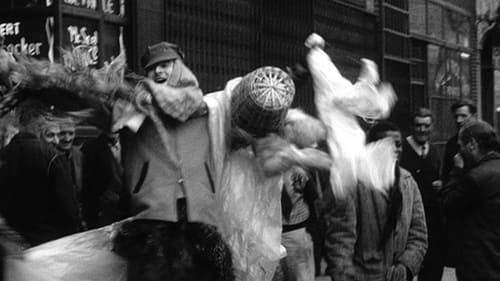
Director
Made in response to the death of his friends Bob Fleischner and Jack Smith, who died within one week of each other in 1989, this feature includes footage from Jacobs’s Star Spangled to Death showing Smith perambulating through downtown Manhattan, as well as views of Fleischner from Jacobs’s 1961 short The Whirled.

Director
Stereograph of the crowd at the opening of the US Centennial Exposition of 1893. It turns into a movie. Into an enormous rugged and craggy 3-D landscape.... before the people return and the scene is righted again. Many laws were broken in the making of this movie, beginning with laws of gravity.

Director
In Capitalism: Slavery, Jacobs uses a Victorian stereograph (a double-photograph) of slaves picking cotton under the watchful eye of a white overseer as the source for this wrenching silent work. Through digital manipulation, Jacobs creates a haunting illusion of depth and movement. It is as if he has "entered" the image and reactivated this historical moment; he moves among the figures and isolates individuals, creating a stuttering, pulsing effect that suggests motion even as it animates stasis.

Director
A digital animation of a Victorian stereoscopic photograph of a 19th-century factory floor, crowded with machinery and child workers. Filmmaker Ken Jacobs isolates the faces of individuals and details of the image, as if searching out the human and the particular within this mechanized field of mass production. Space appears to fold in on itself as Jacobs activates the stereograph; the agitated image flickers and stutters, but the motion never, in fact, progresses.

Director
"The image on the screen flickers unsteadily; the rhythm is unsettling: black/white, black/white, white/black. The film cuts abruptly to a playground. Color appears, sound sets in. Children crawl in the sand, adults watch over them, sitting on benches. It turns abstract. At the end a circle appears on the screen, again flickering strongly, like a beating heart. This is Incendiary Cinema. There is no such thing as a nice succession of images; the film is supposed to distress and disturb, and it also aims to create receptivity for images and viewing. It is a small, quite salutary shot before the main film." — Vienna International Film Festival

Director
Writes Ken Jacobs: "Louis-Aimé-Augustin Le Prince was the first person to create, in 1885, a single recording apparatus that photographed images in quick succession on George Eastman's new paper roll film. Le Prince applied for patents but the fix was in, leaving Edison and the Lumière Brothers to profit from his invention. He vanished under mysterious circumstances in 1890. Well, that's business, but I'm sure personal malice was not involved. In 1888 he made a number of short recordings. Here we see Leeds Bridge on a day like any other, its foot and carriage traffic as portentous or as casual as the crisscrossings of the stars. Looped, we Tom Tom some of its infinity of captured gesture."

Director
This work is derived from one of Jacobs' Nervous Magic Lantern performances, which are created with a hand-manipulated projector and use neither film nor video. Highly stroboscopic and hallucinatory, these kinetic performances result in otherworldly spaces and plays of near-abstraction and suggestive imagery. Insistent Clamor features an evocative musical score. This recent work highlights Jacobs' relentless experimentation with the very fabric of projected light.

Director
Ken Jacobs, the erstwhile master of experimental celluloid filmmaking, fully embraces video technology in this reworking of the 1929 Laurel and Hardy film Berth Marks. Prior to this digital version, Jacobs presented this film as one of his live "nervous system" performances, projecting identical overlapping frames in a slightly asynchronous manner to create the illusion of three-dimensional effects. This creation carries the filmmaker's live performances into the digital realm through a patent-pending "Eternalism" technique, which doesn't require Jacobs' physical presence at each projection. In Ontic Antics, Jacobs extends his ongoing exploration of the teeming depths of life contained within individual frames of film.

Writer
Abstract avantgarde film.

Director
Abstract avantgarde film.

Director
This work is derived from one of Jacobs' Nervous Magic Lantern performances, which are created with a hand-manipulated projector and use neither film nor video. Highly stroboscopic and hallucinatory, these kinetic performances result in otherworldly spaces and plays of near-abstraction and suggestive imagery. In Krypton is Doomed, the audio accompaniment to the shifting visuals is an installment of a Superman radio play — the first ever broadcast, in 1940. This work highlights Jacobs' relentless experimentation with the very fabric of projected light.

Director
A train passes though a tunnel and hurtles on to a station. Time and space are toyed with, things enter an impossible state of ongoing movement while going nowhere. The actual tunnel experience sets off a metaphysical one. Composed to the first part of DRUMMING by Steve Reich.

Director
In Celestial Subway Lines/Salvaging Noise its story is told by director Ken Jacobs but without the conventional storyline. Using a modified magic lantern, an early type of image projector developed in the 17th century, he morphs, flickering images that look like photo-negatives.

Director
This work is a demonstration of one of Jacobs' Nervous Magic Lantern performances, which are created with a hand-manipulated projector and use neither film nor video. Highly stroboscopic and hallucinatory, these kinetic performances result in otherworldly spaces and plays of near-abstraction and suggestive imagery. Mountaineer Spinning features an evocative musical score. This work highlights Jacobs' relentless experimentation with the very fabric of projected light.

Oscar Friendly / Ringmaster / Janitor
An examination of the history of the U.S. through archival footage and contrasting views of society, incorporating audiovisual material ranging from political campaign films to animated cartoons to children’s phonograph records, featuring Al Jolson, Mickey Mouse, the young Jack Smith, and a half-dozen American presidents.

Editor
An examination of the history of the U.S. through archival footage and contrasting views of society, incorporating audiovisual material ranging from political campaign films to animated cartoons to children’s phonograph records, featuring Al Jolson, Mickey Mouse, the young Jack Smith, and a half-dozen American presidents.

Cinematography
An examination of the history of the U.S. through archival footage and contrasting views of society, incorporating audiovisual material ranging from political campaign films to animated cartoons to children’s phonograph records, featuring Al Jolson, Mickey Mouse, the young Jack Smith, and a half-dozen American presidents.

Writer
An examination of the history of the U.S. through archival footage and contrasting views of society, incorporating audiovisual material ranging from political campaign films to animated cartoons to children’s phonograph records, featuring Al Jolson, Mickey Mouse, the young Jack Smith, and a half-dozen American presidents.

Director
An examination of the history of the U.S. through archival footage and contrasting views of society, incorporating audiovisual material ranging from political campaign films to animated cartoons to children’s phonograph records, featuring Al Jolson, Mickey Mouse, the young Jack Smith, and a half-dozen American presidents.

Director
The late, legendary experimental filmmaker Stan Brakhage is the subject of this video portrait by his friends Ken Jacobs and Nisi Jacobs.The video closely documents Brakhage's last visit to New York, and captures scenes of his family life in Boulder, Colorado, affording a view of the artist that is at once candid and casual.

himself
Features interviews with famed underground filmmaker Ken Jacobs and associates, and screens in full (I think) two rare Jacobs works: Nissan Ariana Window, and Spaghetti Aza.

Director
Our daughter Nisi and son Aza happened to both be staying at our loft on Chambers Street when fundamentalist Islam struck. A friend observing the burning buildings from Brooklyn phoned to say, “Get out. It can fall on you.” But we were upstate until 9.15 when the city partially reopened to incoming traffic, so that my taping begins with our approach over the almost empty George Washington Bridge. It would be another 15 days before we were allowed to move back into our place. Our friend Lucia lent us her high-rise apartment, facing south with a dead-on view of smoking lower Manhattan. I kept taping, hours of street observations. Although I’ve given a title to this loose selection of materials it is not so much a work as sampling of the ongoing actuality. --Ken Jacobs

Director
A Tom Tom Chaser is Jacobs' 2002 poetic riff on the transformation of his classic film Tom Tom the Piper's Son from chemical to electronic form during the telecine process.

Self
A compilation of over 30 years of private home movie footage shot by Lithuanian-American avant-garde director Jonas Mekas, assembled by Mekas "purely by chance", without concern for chronological order.

Director
In this unique document, Jacobs demonstrates one of his live, multi-projection "Nervous System" film performances in real time. (The Nervous System performances feature a unique double-analysis projector set-up, deriving 3-D from standard 2-D film, most often with archival and other found footage.) Jacobs' own narration guides the viewer through his manipulations and performance strategies, revealing his cinematic shorthand in this brief improvisation on an archival film from 1900.

Director
A short by Ken Jacobs. Taormina, Sicily; Mt. Etna erupting nearby.
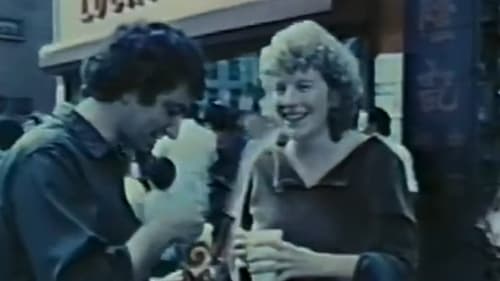
Self
Filmmaker Jonas Mekas films 160 underground film people over four decades.

Director
1906 - Original cinematographer unknown. 1996 - New arrangement by Ken Jacobs. Shots shown as found in "A Trip Down Mount Tamalpais", the Paper Print Collection, Library of Congress. Optically copied by Sam Bush, Western Cine Lab., Denver, from l6mm to 35mm letterbox format to allow double-image mirroring in 1:85 ratio projection.

Director
First screened as part of Jacobs' "Nervous System" film performance, The Georgetown Loop is based on an archival film from 1903, which Jacobs pairs with its mirror double to produce a kaleidoscopic two-screen projection. The original film depicts a journey shot from the cab of a train passing through the Colorado Rockies, and, in this hypnotic new form, comes to suggest the movement of consciousness itself.

Director
Ken Jacobs film on Rodney King and the LA Riots utilizing Pulfrich 3-D, in which a single dark filter is placed before one eye.

Director
Berlin documented by the US after WW2, recorded again in 1986 by Flo and Ken feigning innocence when passing by elevated train between Capitalist showroom and Communist austerity. One roll of film is blank, evidence of East Berlin guards commanding the film be unloaded onto the station platform. KJ narrates. With the use of a single dark (Pulfrich) filter.

Director
'Blinking' 2D rendition of one of Ken Jacobs' Nervous System performances first presented in 1994.

Himself
Not a documentary in the strictest sense of the word. Rather, it is a journey through the world of the artist Jonas Mekas - one of the exponents of independent U.S. movies; founder and director of the New York Anthology Film Archive.

Quartet Number One (1991) 8 min.

Writer
Avant-garde filmmaker Ken Jacobs presents Buster Keaton's short silent comedy Cops (1922) as his own work by blacking-out approximately the top three-fourths or four-fifths of the frame.

Director
Avant-garde filmmaker Ken Jacobs presents Buster Keaton's short silent comedy Cops (1922) as his own work by blacking-out approximately the top three-fourths or four-fifths of the frame.

Writer
Found Footage avantgarde film.

Director
Found Footage avantgarde film.

Director
Music composition by Harrison Birtwistle, 1971 tape realized by Peter Zinovieff.
Nervous Magic Lantern performance by Ken jacobs, 1990.

Director
An unfinished 3D film using the Pulfrich filter. "We travel by train through the mountains of central and northern Italy, 3-D country; the Alps, there are a lot of them. Some great numbers accompany: "Smoke Gets In Your Eyes".,, "Beyond The Blue Horizon",,. but, also, spastic animations derived from caricatures of Jews, the rabid inkings of centuries, Over the mountains and through the ages." --Ken Jacobs
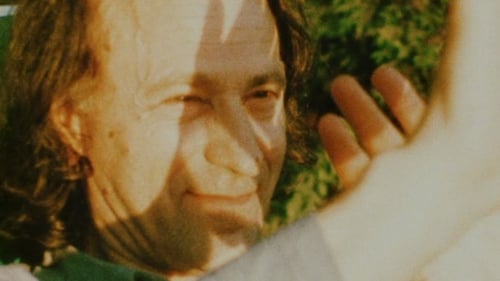
Self
«Фильм состоит из 124 коротких скетчей, каждый продолжительностью от полминуты до примерно двух минут. Портреты людей, с которыми я провел время, мест, времен года, погоды (штормы, снегопады, метели и так далее). Многое о моих друзьях кинематографистах - улицы и парки Нью-Йорка - короткий побег на природе, за город - ничего зрелищного, неважного праздника жизни, который к настоящему времени прошел, и остается только в качестве записи в этих личных кратких набросках...» Йонас Мекас.

Director
Directed by Ken Jacobs, 1985. In Jacobs' own words: "I wish more stuff was available in its raw state, as primary source material for anyone to consider, and to leave for others in just that way, the evidence uncontaminated by compulsive proprietary misapplied artistry, "editing", the purposeful "pointing things out" that cuts a road straight and narrow through the cine-jungle; we barrel through thinking we’re going somewhere and miss it all. Better to just be pointed to the territory, to put in time exploring, roughing it, on our own. For the straight scoop we need the whole scoop, or no less than the clues entire and without rearrangement. O, for a Museum of Found Footage, or cable channel, library, a shit-museum of telling discards accessible to all talented viewers/auditors. A wilderness haven salvaged from Entertainment."

Director
"The editing procedure was to count the number of shots and start the film off with the numerically middle shot and then, after that, the shot that had preceded it, and the shot that had followed it, and to keep fanning further and further out until one saw the first shot of the film followed by the last shot" -Ken Jacobs

Self
Jonas Mekas adjusts to a life in exile in New York in his autobiographical film, shot between 1949 and 1963.

Director
Silent film by Ken Jacobs featuring his son asleep at the table then being put to bed.

Director
In the backyard with the inimitable Jerry Sims. Shot in 8mm in 1975, edited and transferred to 16mm in 1987.

Director
Filmed by Stella Weiss and family, chance-assembled from uncut 100-foot film-rolls. Sound precedes and follows silent image (40 minutes of image plus 12 minutes of sound). My wife Flo's family as recorded by her Aunt Stella. The title is no intended put-down but a simple statement of fact, as I see it. Brooklyn was a place made up of many little villages; a near-shtetl is pictured in the space of a storefront. (Ken Jacobs)

Director
Home movie by Ken Jacobs. Black and white and silent.

Director
“The film said something necessary at the time: the numinous is everywhere, even upstate Rust Belt Binghamton. The light was perfect, students brilliant, America’s killing spree then in Vietnam distant.” -KJ
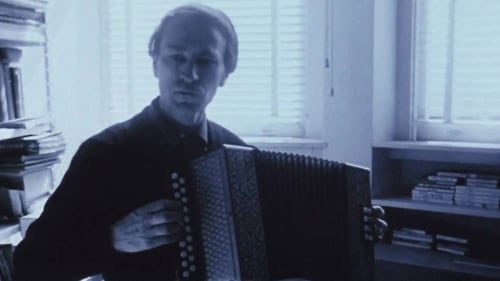
Self
An epic portrait of the New York avant-garde art scene of the 60s.

Director
"NISSAN ARIANA WINDOW is 3/4's of our daughter's name. She was just kid when these pictures were taken. Some were taken before she was born: pregnant Flo together with pregnant cat China sunning themselves under the skylight. Andrew Noren likes the movie." - Ken Jacobs
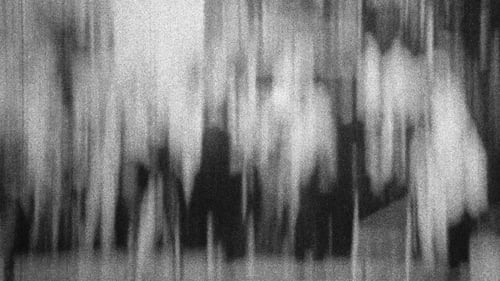
Director
An experimental feature made by rephotographing the 1905 Biograph short Tom, Tom, the Piper's Son.

Director
"Flat image (of snowbound suburban housing tract) blossoms into 3D only when viewer places Eye Opener before the right eye. (Keeping both eyes open, of course. As with all stereo experiences, center seats are best. Space will deepen as one views further from the screen.) The found-sound is X-ratable (not for children or Nancy Reagan) but is important to the film's perfect balance (GLOBE is symmetrical) of divine and profane.. - K.J.
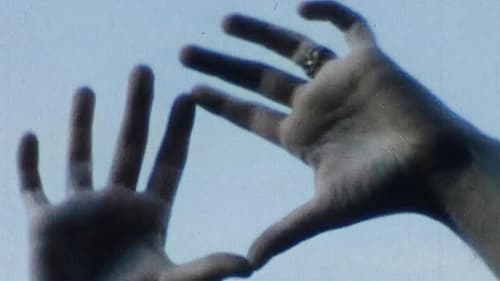
Director
Ken Jacobs’s most elusive and mysterious film is at once an allegory of movie-making, a demonstration of 8mm versatility, and a celebration of a now vanished neighborhood beneath the Brooklyn Bridge.

Director
Three identical prints of a single 100 foot fixed-camera take are shown from beginning to end-roll light-flare, with a few feet of blackness preceding/bridging/following the rolls. …The loop repetition (the series hopefully will intrigue you to further run-throughs) automatically imparts a steadily growing rhythmic sense of the street-activities. Anticipation for familiar movement-complexes builds, and as all smaller complexities join up in our knowledge of the whole the purely accidental counter-passings of people and vehicles becomes satisfyingly cogent, seems rhythmically structured and of a piece. Becomes choreography.

Director
First shown on January 30, 1967, FOR LIFE AGAINST THE WAR was an open-call, collective statement from American independent filmmakers disparate in style and sensibility but united by their opposition to the Vietnam War. Part of the protest festival Week of the Angry Arts, the epic compilation film incorporated minute-long segments which were sent from many corners of the country, spliced together and projected. The original presentation of the works was more of an open forum with no curation or selection, and in 2000 Anthology Film Archives preserved a print featuring around 40 films from over 60 submissions.

"The whole film are non-art portraits of people in which they do what they want with this hat – and therefore, act or stand in front of my camera. It’s only love: therefore it can’t harm you". Joyce Wieland.

Director
Single fixed-camera take looking from within darkened room, (camera within a camera) out through fire-escape door into vertical space between rears of downtown N. Y. loft buildings. A potted plant, fallen sheet of white paper, cat rests on the foreground door-ledge. The flow of the image is interrupted, partially and then wholly dissolving into blackness; the picture reemerges, the objects smear, somewhat double, edges break up... and again the serene image scintillatingly looms into view. Focus shifts abruptly between foreground and background planes, creating a strong volume-illusion. The fragile image then shines forth for one last time before dying out.

Director
"You've come back" "You're still here"

Director
Film portrait of Naomi Levine by Ken Jacobs

Director
Jacobs's 1st Window is a dazzling balletic breaking-up of the cinematic frame.

Producer
The moving camera shapes the screen image with great purposefulness, using the frame of a window as fulcrum upon which to wheel about the exterior scene. The zoom lens rips, pulling depth planes apart and slapping them together, contracting and expanding in concurrence with camera movements to impart a terrific apparent-motion to the complex of the object-forms pictured on the horizontal-vertical screen, its axis steadied by the audience's sense of gravity. The camera's movements in being transferred to objects tend also to be greatly magnified (instead of the camera the adjacent building turns). About four years of studying the window-complex preceded the afternoon of actual shooting (a true instance of cinematic action-painting). The film exists as it came out of the camera barring one mechanically necessary mid-reel splice

Cinematography
The moving camera shapes the screen image with great purposefulness, using the frame of a window as fulcrum upon which to wheel about the exterior scene. The zoom lens rips, pulling depth planes apart and slapping them together, contracting and expanding in concurrence with camera movements to impart a terrific apparent-motion to the complex of the object-forms pictured on the horizontal-vertical screen, its axis steadied by the audience's sense of gravity. The camera's movements in being transferred to objects tend also to be greatly magnified (instead of the camera the adjacent building turns). About four years of studying the window-complex preceded the afternoon of actual shooting (a true instance of cinematic action-painting). The film exists as it came out of the camera barring one mechanically necessary mid-reel splice

Editor
The moving camera shapes the screen image with great purposefulness, using the frame of a window as fulcrum upon which to wheel about the exterior scene. The zoom lens rips, pulling depth planes apart and slapping them together, contracting and expanding in concurrence with camera movements to impart a terrific apparent-motion to the complex of the object-forms pictured on the horizontal-vertical screen, its axis steadied by the audience's sense of gravity. The camera's movements in being transferred to objects tend also to be greatly magnified (instead of the camera the adjacent building turns). About four years of studying the window-complex preceded the afternoon of actual shooting (a true instance of cinematic action-painting). The film exists as it came out of the camera barring one mechanically necessary mid-reel splice

Director
The moving camera shapes the screen image with great purposefulness, using the frame of a window as fulcrum upon which to wheel about the exterior scene. The zoom lens rips, pulling depth planes apart and slapping them together, contracting and expanding in concurrence with camera movements to impart a terrific apparent-motion to the complex of the object-forms pictured on the horizontal-vertical screen, its axis steadied by the audience's sense of gravity. The camera's movements in being transferred to objects tend also to be greatly magnified (instead of the camera the adjacent building turns). About four years of studying the window-complex preceded the afternoon of actual shooting (a true instance of cinematic action-painting). The film exists as it came out of the camera barring one mechanically necessary mid-reel splice

Director
An unfinished 8mm film from 1964

Director
A film by Ken Jacobs made in 8mm

Director
An 8mm film by Ken Jacobs made after his 16mm camera was stolen

Director
Little Stabs at Happiness is a collection of silent shorts Jacobs shot from the period of 1959-1963. Jaunty tunes (and a somber reflection) accompany the footage.

Director
Existing home movie titled and placed into distribution by Jacobs without intervention.

Director
Short film by Ken Jacobs later included in his compilation The Whirled.

A man fondles objects, looks at himself in the mirror, poses in different clothes, smiles and makes faces at the camera while his voice on the soundtrack speaks of his despair, makes impressionistic statements and little songs, quotes Greta Garbo and Maria Montez, tells the story of a lonely little boy and tells the story of a woman named Madame Nescience who dreams of herself as the Mother Superior of a convent of sexual perversion.

Director
A man fondles objects, looks at himself in the mirror, poses in different clothes, smiles and makes faces at the camera while his voice on the soundtrack speaks of his despair, makes impressionistic statements and little songs, quotes Greta Garbo and Maria Montez, tells the story of a lonely little boy and tells the story of a woman named Madame Nescience who dreams of herself as the Mother Superior of a convent of sexual perversion.

Director
Shot in Provincetown in the summer of '61 with the goal of funding a larger project, the film was never completed due to a violent argument between actor Jack Smith and director Ken Jacobs shortly after the shooting began. A title card explains that Smith 'would've starred as the Fairy Vampire.'

Director
A musical with Nazis and Jews.

Shot in 1959, Scotch Tape is Jack Smith's first film -- a joyous, three-minute romp, in color, using Peter Duchin's rhumba "Carinhoso" for its soundtrack. Three young men merrily bop through the wreckage of razed buildings at the site of what would become Lincoln Center. Apparently, Scotch Tape was never edited and, instead, was cut in the camera by Smith, combining long shots and close-ups while filming mostly from overhead. The title comes from a small strip of scotch tape that was accidentally stuck on the camera and so is visible in the lower-right corner of the frame throughout the film.

Director
Jack Smith descends a fire escape in a makeshift "Arabian" costume and improvises increasingly frenetic choreography.

Director
Short film with Jack Smith as the mysterious leader of an even-more-mysterious cult, garbed in pseudo-papal regalia and adorned with jewelry and makeup. His followers do his bidding by abducting and cross-dressing an unsuspecting mailman. Smith launches a processional and is soon joined by real neighborhood children in the streets of Lower Manhattan. Eventually, the police came along and shooting ends, but Ken Jacobs gets an overhead shot of Smith trying to explain himself to the cops.

Director
This short film documents the daily life of the goings-on on Orchard Street, a commercial street in the Lower East Side New York City.

Director









































































